
The European rabbit (Oryctolagus cuniculus) is a species of rabbit native to southern Europe. Because of its extreme abundance in the Iberian Peninsula, Phoenicians chose the name Spain after it. It has been widely introduced elsewhere often with devastating effects on local biodiversity. However, its decline there (caused by myxomatosis and viric pneumonia) has caused the decline of its high dependent predators, the Spanish Lynx and the Spanish Imperial Eagle.
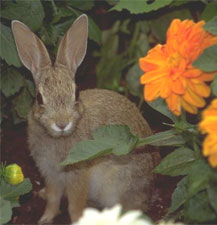 Weights and Measures : European rabbits are small, gray-brown mammals ranging from 34-45 cm (13-18 in) in length, and are approximately 1.3-2.2 kg (3-5 lb) in weight. Rabbits have long ears, large hind legs, and short, fluffy tails. Weights and Measures : European rabbits are small, gray-brown mammals ranging from 34-45 cm (13-18 in) in length, and are approximately 1.3-2.2 kg (3-5 lb) in weight. Rabbits have long ears, large hind legs, and short, fluffy tails.
Big Foot: Rabbits move by hopping, using their long and powerful hind legs. To facilitate quick movement, a rabbit's hind feet have a thick padding of fur to dampen the shock of rapid hopping. Their toes are long, and are webbed to keep from spreading apart as the animal jumps.
Warrens: European rabbits are well-known for digging networks of burrows called warrens, where they spend most of their time when not feeding. Unlike the related hares (Lepus), rabbits are altricial, the young being born blind and furless, in a furlined nest in the warren, and totally dependent upon their mother.
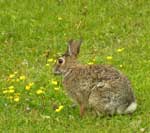
Cottontail: The cottontail rabbits are 16 lagomorph species in the genus Sylvilagus, found in the Americas. In appearance most cottontail rabbits closely resemble the wild European rabbit. Most members of the genus have a stub tail with a white underside that shows when they are retreating, giving them their name "cottontails."
However, this feature is not present in all cottontails (for example, the underside of the Brush rabbit's tail is gray), nor is it unique to the genus (for example, the European rabbit also has a white scut). The genus is widely distributed across North America, though most species are confined to particular regions. Most (though not all) species live in burrows, and all have altricial young.
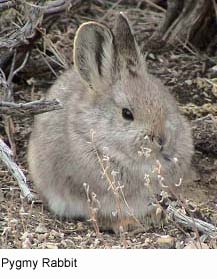 Rabbit Invaders: In Australia, rabbits are the most serious mammalian pests, an invasive species, and are responsible for the extinction of about as many native animals as the fox. Annually, European Rabbits cause millions of dollars of damage to agriculture. In their natural environment and in captivity, rabbits are a benign, even useful species. However, when introduced by humans into environments that do not have natural defences against them, rabbits can cause enormous damage. Perhaps the most well-known example of this is the continent of Australia. Rabbit Invaders: In Australia, rabbits are the most serious mammalian pests, an invasive species, and are responsible for the extinction of about as many native animals as the fox. Annually, European Rabbits cause millions of dollars of damage to agriculture. In their natural environment and in captivity, rabbits are a benign, even useful species. However, when introduced by humans into environments that do not have natural defences against them, rabbits can cause enormous damage. Perhaps the most well-known example of this is the continent of Australia.
Pet Rabbits: A healthy indoor pet rabbit can live 6-10 years. They enjoy throwing around toys and chewing on cardboard. In some instances, they can even become good friends with cats and dogs. Though they are often caged in small areas, they can be free roaming pets similar to cats and dogs, often called 'house rabbits'. Large, inexpensive cages can be custom made from 'Idea-cubes', which can be found in many department stores.
To Spay, or Not to Spay: Female pet rabbits should be spayed at a young age, as they are extremely prone to cervical cancer and can suffer and die later on if not prevented. Spaying will also reduce many aggressive behaviors related to breeding. There are also many health and behavior benefits from the neutering of male rabbits. Some rabbits can be extremely aggressive towards other rabbits unless effort is made to bond the two over time, spaying/neutering both parties is key in making this process successful.
Keep Those Claws: Unlike cats, rabbits cannot be declawed. Lacking pads on the bottoms of their feet, rabbits require their claws for balance, and declawing a rabbit will render it unable to stand, permanently crippling it.
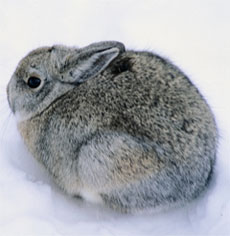 Popular Pets: Provided they are well cared for, rabbits can make friendly and playful pets. They are widely kept throughout the world, both indoors and out. Popular Pets: Provided they are well cared for, rabbits can make friendly and playful pets. They are widely kept throughout the world, both indoors and out.
House Guests : Rabbits kept indoors
are typically healthier and more social than rabbits kept outdoors. Housed indoors and provided with adequate damage-proofing (especially of electrical cables and house plants that may be
toxic), rabbits are relatively safe from predators, parasites, disease, and temperature extremes.
Outdoor Rabbits: Rabbits kept outdoors must be provided with shelter that is heated in winter and shaded in summer. Domesticated rabbits are most comfortable in temperatures between 10 to 21 degrees Celsius (50 to 70 degrees Fahrenheit), and cannot endure temperatures above 32 degrees Celsius (90 degrees Fahrenheit).
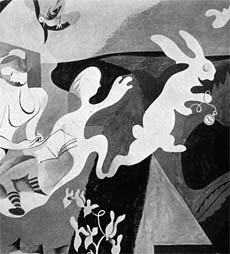 What's for Dinner? Veterinarians specializing in rabbits recommend a diet consisting of clean water, a small amount of commercial pellets and unlimited grass hay daily. Other vegetables (2 cups per 5 pounds of body weight) should be fed: good choices include romaine lettuce (not iceberg), parsley, cilantro, dandelion, radicchio, endive, and basil. Carrots and fruits should be used sparingly. What's for Dinner? Veterinarians specializing in rabbits recommend a diet consisting of clean water, a small amount of commercial pellets and unlimited grass hay daily. Other vegetables (2 cups per 5 pounds of body weight) should be fed: good choices include romaine lettuce (not iceberg), parsley, cilantro, dandelion, radicchio, endive, and basil. Carrots and fruits should be used sparingly.
Keep Your Pet Healthy: Domestic rabbits should be checked daily as infections and illnesses can occur very quickly.
Cleaning Your Rabbit: Teeth should not be too long because if they are the rabbit cannot eat. Do not attempt to grind or clip a rabbit's teeth; one is advised to seek a veterinarian. Rabbit's teeth can grow up to five inches a year. A rabbit's whiskers are a major sensory organ and should never be clipped. The eyes should be clean with no crusts evident. Checking the rabbit's vent area (bottom) is vital as any feces left will attract flies that will leave eggs and hatch into maggots. The maggots will then eat rotten flesh causing severe pain for the animal. Ears also should be clean along with any other part of the rabbit.
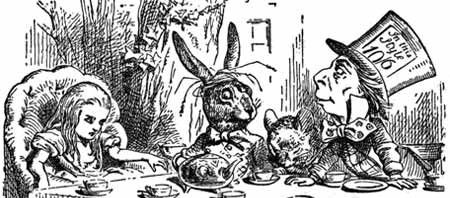
All text is available under the terms
of the GNU Free Documentation License
|